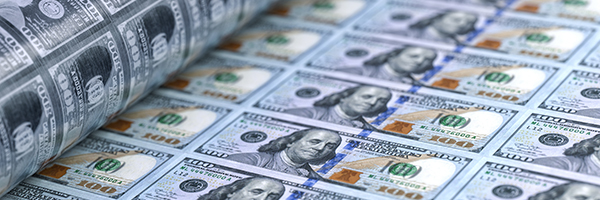Not 0%. But then almost no one expects the Federal Reserve to stand pat on interest rates at its March 16 meeting–even after the Russian invasion of Ukraine.
Not 50 basis points. Although many on Wall Street project that the Fed will throw its customary caution to the winds in the face of the highest rate of inflation n 40 years.
No, in as straight forward a statement as the Fed can make, Fed chair Jerome Powell said the U.S. central bank will start a new cycle of higher interest rates with a 25 basis point increase on March 16. (It takes 100 basis points to make one percentage point.)
“I am inclined to propose and support a 25 basis-point rate hike,” Powell told the House Financial Services Committee Wednesday. “To the extent that inflation comes in higher or is more persistently high than that, then we would be prepared to move more aggressively by raising the federal funds rate by more than 25 basis points at a meeting or meetings.”
Powell’s statement really leaves the regular update of the Fed’s Dot Plot as the only remaining wildcard at the March meeting.The Dot Plot collects projections from Fed officials on the future course of interest rates, inflation, unemployment, and economic growth. Holding the Fed’s benchmark rate steady at 0% to 0.25% could be coupled with a Dot Plot that shows Fed officials projecting higher future interest rates and inflation. And maybe lower growth.
Powell didn’t offer a definitive opinion on how high rates would have to rise to get inflation–now running at an annual rate of 7.5%–under control. “We talk about getting to neutral, which is a neutral rate which would be somewhere between 2% and 2.5%. It may well be that we need to go higher than that. We just don’t know.”
But he did say that he continues to believe that the Fed can engineer a soft landing. In that scenario higher interest rates would bring inflation under control but not push the economy into a recession.
“I think that it is more likely than not that we can achieve what we call a soft landing,” he said. “They are far more common in our history than is generally understood.”
But I take that statement with a grain–or more (these being inflationary times) of salt. No one should expect a Fed chair to say that getting inflation under control without causing a recession is impossible. After all that’s the kind of statement that brings on a recession, right?
At 3 p.m. New York time today, Wednesday, March 2, the yield on the 10-year Treasury had jumped 13 basis points to 1.86%. The yield on the 2-year Treasury had climbed to 1.51%. That maturity showed at 1.38% yield yesterday.


